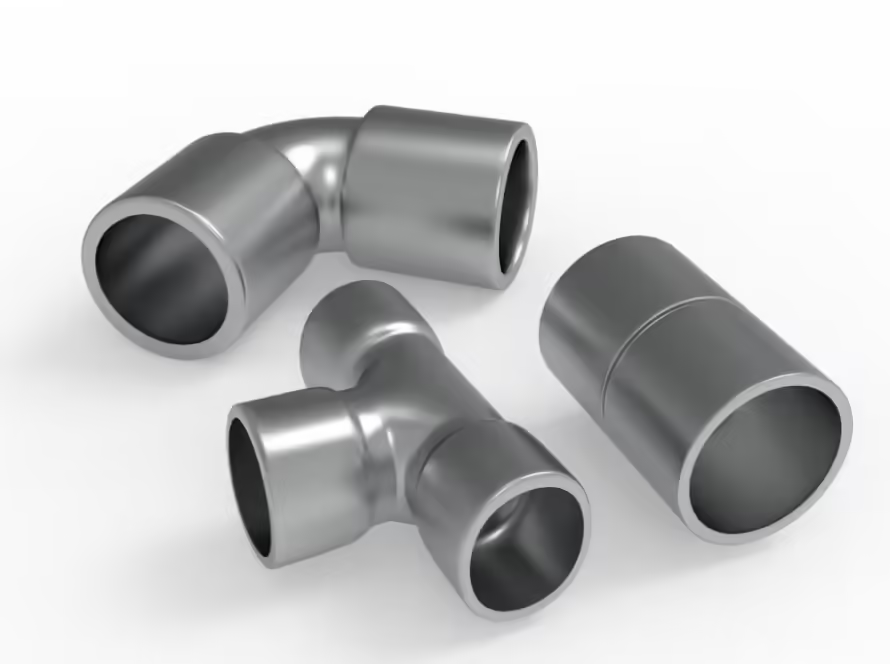DEFINITION
Flange, also known as flange flange or flange. Flange is a part that connects shafts to each other and is used to connect pipe ends. It is also used as a flange on the inlet and outlet of equipment to connect two devices.
CLASSIFICATION
Reducing flange
Reducing flanges are a type of flange that connects pipes of different sizes. They have a larger diameter on one side and a smaller diameter on the other side, allowing pipes of different diameters to be installed. Reducing flange joints consist of a reducing flange and a standard flange, which acts as a reducing flange.
Stainless steel flange
Stainless steel flange is a common pipe connector. As an important component of the pipeline system, stainless steel flange has the functions of connecting, sealing and supporting the pipeline.
Pressure vessel flange
Pressure vessel flange refers to the flange connecting the cylinder and the head, the cylinder and the cylinder, or the head and the tube sheet. It has the same function and similar appearance as the pipe flange, but cannot be interchanged due to the different definitions of nominal diameters. Its function is to combine different pressure components together while ensuring that there is no leakage at the connection.
Flat welding flange
Flat welding flange refers to a flange that is connected to a container or pipeline by a fillet weld. It is an arbitrary flange. During design, it is checked as an integral or loose flange according to the degree of integrity of the connection between the flange ring and the straight section. The flange ring has two types: with neck and without neck. Compared with the necked butt welding flange, the flat welding flange has a simple structure and saves materials, but its rigidity and sealing are not as good as the necked butt welding flange. Flat welding flanges are widely used in the connection of medium and low pressure containers and pipelines.
Neck butt welding flange
Neck butt welding flange refers to a flange with a tapered neck and butt welding with the cylinder or pipe. It is an integral flange. Due to the transition structure of the tapered neck and the butt welding connection, the strength and rigidity of the flange are enhanced, and the sealing performance is better than that of the flat welding flange. The disadvantage is that it needs to be manufactured with forgings, which consumes a lot of materials and has high manufacturing costs. It is suitable for occasions with high pressure and temperature or high sealing requirements.
Socket Welding Flange
Socket welding flange refers to the flange that the pipe end is inserted into the flange ring step and welded at the pipe end and outside. There are two types: with neck and without neck. The neck pipe flange has good rigidity, small welding deformation, good sealing, and can be used in occasions with a pressure of 1.0~10.0MPa. The type B flange for containers is also a socket welding flange, which is used in occasions with high sealing requirements. When designing, the socket welding flange can be checked as an integral flange.
Threaded flange
Threaded flange refers to a flange that is connected to the pipe by threads. When designing, it can be treated as a loose flange. The advantage is that welding is not required, and the additional torque generated on the cylinder or pipe when the flange is deformed is very small. The disadvantage is that the flange is thick and the cost is high. It is suitable for the connection of high-pressure pipelines.
loose flange
A slip-on flange is a flange that is loosely attached to the flange of a container or pipe. A flange is a part that connects shafts to each other and is used to connect pipe ends. It is also used as a flange on the inlet and outlet of equipment to connect two devices.
A slip-on flange is a loose flange. The flange can be made by flanging, directly turning or welding a ring. The advantage is that when the flange is deformed, no additional torque is generated on the container or pipe. It is easy to manufacture and can be made of a material different from that of the container or pipe, which is convenient for saving precious metals. The disadvantage is that the flange is relatively thick. It is suitable for occasions where the container or pipe is lined with brittle materials and the pressure is not high.






